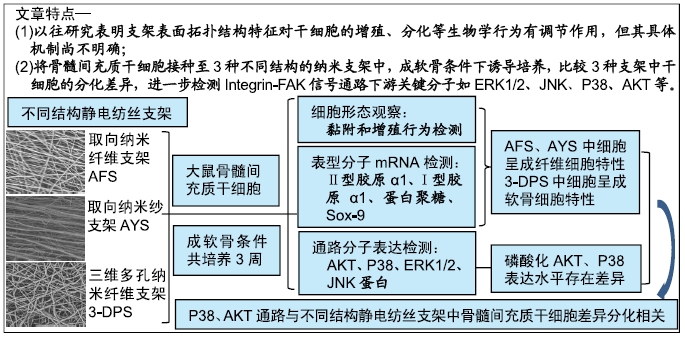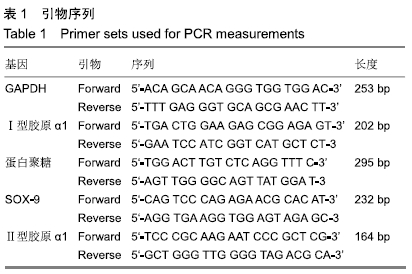[1] URBAN JP, ROBERTS S.Degeneration of the intervertebral disc. Arthritis Res Ther.2003;5(3):120-130.
[2] YASUMA T, KOH S, OKAMURA T, et al.Histological changes in aging lumbar intervertebral discs. Their role in protrusions and prolapses.J Bone Joint Surg Am.1990;72(2):220-229.
[3] BOOS N, WEISSBACH S, ROHRBACH H, et al.Classification of age-related changes in lumbar intervertebral discs: 2002 Volvo Award in basic science.Spine (Phila Pa 1976).2002;27(23):2631-2644.
[4] HOY D, BAIN C, WILLIAMS G, et al.A systematic review of the global prevalence of low back pain. Arthritis Rheum.2012;64(6):2028-2037.
[5] PIRVU T, BLANQUER SB, BENNEKER LM, et al.A combined biomaterial and cellular approach for annulus fibrosus rupture repair. Biomaterials. 2015;42:11-19.
[6] GLUAIS M, CLOUET J, FUSELLIER M, et al.In vitro and in vivo evaluation of an electrospun-aligned microfibrous implant for annulus fibrosus repair. Biomaterials.2019;205:81-93.
[7] HUDSON KD, ALIMI M, GRUNERT P, et al.Recent advances in biological therapies for disc degeneration: tissue engineering of the annulus fibrosus, nucleus pulposus and whole intervertebral discs.Curr opin Biotechnol.2013;24(5):872-879.
[8] CHU G, SHI C, WANG H, et al.Strategies for Annulus Fibrosus Regeneration: From Biological Therapies to Tissue Engineering.Front Bioeng Biotechnol.2018;6:90.
[9] VAN UDEN S, SILVA-CORREIA J, OLIVEIRA JM, et al.Current strategies for treatment of intervertebral disc degeneration: substitution and regeneration possibilities.Biomater Res. 2017;21:22.
[10] GUTERL CC, SEE EY, BLANQUER SB, et al.Challenges and strategies in the repair of ruptured annulus fibrosus.Eur Cell Mater.2013;25:1-21.
[11] MA J, HE Y, LIU X, et al.A novel electrospun-aligned nanoyarn/three- dimensional porous nanofibrous hybrid scaffold for annulus fibrosus tissue engineering.Int J Nanomedicine. 2018;13:1553-1567.
[12] LI X, ZHANG Y, QI G. Evaluation of isolation methods and culture conditions for rat bone marrow mesenchymal stem cells. Cytotechnology. 2013;65(3):323-334.
[13] LI J, LIU C, GUO Q, et al. Regional variations in the cellular, biochemical, and biomechanical characteristics of rabbit annulus fibrosus.PloS One. 2014;9(3):e91799.
[14] VERGARI C, MANSFIELD J, MEAKIN JR, et al.Lamellar and fibre bundle mechanics of the annulus fibrosus in bovine intervertebral disc.Acta Biomater.2016;37:14-20.
[15] WISMER N, GRAD S, FORTUNATO G, et al. Biodegradable electrospun scaffolds for annulus fibrosus tissue engineering: effect of scaffold structure and composition on annulus fibrosus cells in vitro. Tissue Eng Part A.2014;20(3-4):672-682.
[16] YIN Z, CHEN X, SONG HX, et al. Electrospun scaffolds for multiple tissues regeneration in vivo through topography dependent induction of lineage specific differentiation.Biomaterials.2015;44:173-185.
[17] TIAN F, HOSSEINKHANI H, HOSSEINKHANI M, et al.Quantitative analysis of cell adhesion on aligned micro- and nanofibers.J Biomed Mater Res A.2008;84(2):291-299.
[18] WOO KM, CHEN VJ, MA PX. Nano-fibrous scaffolding architecture selectively enhances protein adsorption contributing to cell attachment. J Biomed Mater Res A.2003;67(2):531-537.
[19] AHMED I, PONERY AS, NUR-E-KAMAL A, et al.Morphology, cytoskeletal organization, and myosin dynamics of mouse embryonic fibroblasts cultured on nanofibrillar surfaces. Mol Cell Biochem. 2007;301(1-2): 241-249.
[20] LI WJ, JIANG YJ, TUAN RS.Chondrocyte phenotype in engineered fibrous matrix is regulated by fiber size.Tissue Eng.2006;12(7):1775-1785.
[21] DAVIES JE, AJAMI E, MOINEDDIN R, et al. The roles of different scale ranges of surface implant topography on the stability of the bone/implant interface. Biomaterials. 2013; 34(14):3535-3546.
[22] SEO CH, JEONG H, FENG Y, et al.Micropit surfaces designed for accelerating osteogenic differentiation of murine mesenchymal stem cells via enhancing focal adhesion and actin polymerization. Biomaterials. 2014;35(7):2245-2252.
[23] HUANG H, KAMM RD, LEE RT. Cell mechanics and mechanotransduction: pathways, probes, and physiology.Am J Physiol Cell Physiol.2004;287(1):C1-11.
[24] IQBAL J, ZAIDI M. Molecular regulation of mechanotransduction. Biochem Biophys Res Commun. 2005;328(3):751-755.
[25] GIANCOTTI FG, RUOSLAHTI E.Integrin signaling.Science. 1999;285 (5430):1028-1032.
[26] BIGGS MJ, RICHARDS RG, GADEGAARD N, et al.The use of nanoscale topography to modulate the dynamics of adhesion formation in primary osteoblasts and ERK/MAPK signalling in STRO-1+ enriched skeletal stem cells.Biomaterials. 2009;30(28):5094-5103.
[27] ZHANG Y, PIZZUTE T, PEI M.A review of crosstalk between MAPK and Wnt signals and its impact on cartilage regeneration.Cell Tissue Res. 2014;358(3):633-649.
[28] WANG Y, YAO M, ZHOU J, et al.The promotion of neural progenitor cells proliferation by aligned and randomly oriented collagen nanofibers through β1 integrin/MAPK signaling pathway. Biomaterials. 2011;32(28):6737-6744.
[29] CHEN YC, LEE DC, TSAI TY, et al.Induction and regulation of differentiation in neural stem cells on ultra-nanocrystalline diamond films.Biomaterials.2010;31(21):5575-5587.
[30] LI J, ZHAO Z, LIU J, et al.MEK/ERK and p38 MAPK regulate chondrogenesis of rat bone marrow mesenchymal stem cells through delicate interaction with TGF-beta1/Smads pathway.Cell Prolif. 2010; 43(4):333-343.
[31] LI J, ZHAO Z, YANG J, et al.p38 MAPK mediated in compressive stress-induced chondrogenesis of rat bone marrow MSCs in 3D alginate scaffolds.J Cell Physiol.2009;221(3):609-617.
[32] CHUN JS. Expression, activity, and regulation of MAP kinases in cultured chondrocytes. Methods Mol Med.2004;100:291-306.
[33] STANTON LA, SABARI S, SAMPAIO AV, et al.p38 MAP kinase signalling is required for hypertrophic chondrocyte differentiation. Biochem J. 2004; 378(Pt 1):53-62.
[34] TULI R, TULI S, NANDI S, et al.Transforming growth factor-beta- mediated chondrogenesis of human mesenchymal progenitor cells involves N-cadherin and mitogen-activated protein kinase and Wnt signaling cross-talk.J Biol Chem.2003;278(42): 41227-41236.
[35] OH CD, CHANG SH, YOON YM, et al.Opposing role of mitogen-activated protein kinase subtypes, erk-1/2 and p38, in the regulation of chondrogenesis of mesenchymes.J Biol Chem. 2000; 275(8): 5613-5619.
[36] CHEN L, QANIE D, JAFARI A, et al. Delta-like 1/fetal antigen-1 (Dlk1/FA1) is a novel regulator of chondrogenic cell differentiation via inhibition of the Akt kinase-dependent pathway.J Biol Chem. 2011; 286(37): 32140-32149.
[37] DOWNWARD J.Mechanisms and consequences of activation of protein kinase B/Akt. Curr Opin Cell Biol.1998;10(2):262-267.
[38] LAWLOR MA, ALESSI DR.PKB/Akt: a key mediator of cell proliferation, survival and insulin responses.J Cell Sci.2001;114(Pt 16):2903-2910.
[39] BRAZIL DP, HEMMINGS BA.Ten years of protein kinase B signalling: a hard Akt to follow. Trends Biochem Sci.2001;26(11):657-664.
[40] DURONIO V, SCHEID MP, ETTINGER S.Downstream signalling events regulated by phosphatidylinositol 3-kinase activity.Cell Signal. 1998;10(4):233-239.
[41] LI W, WU X, QU R, et al.Ghrelin protects against nucleus pulposus degeneration through inhibition of NF-κB signaling pathway and activation of Akt signaling pathway.Oncotarget.2017; 8(54): 91887-91901.
[42] PRATSINIS H, KLETSAS D.PDGF, bFGF and IGF-I stimulate the proliferation of intervertebral disc cells in vitro via the activation of the ERK and Akt signaling pathways.Eur Spine J.2007;16(11):1858-1866.
[43] BAKER BM, HANDORF AM, IONESCU LC, et al.New directions in nanofibrous scaffolds for soft tissue engineering and regeneration. Expert Rev Med Devices.2009;6(5):515-532.
|








